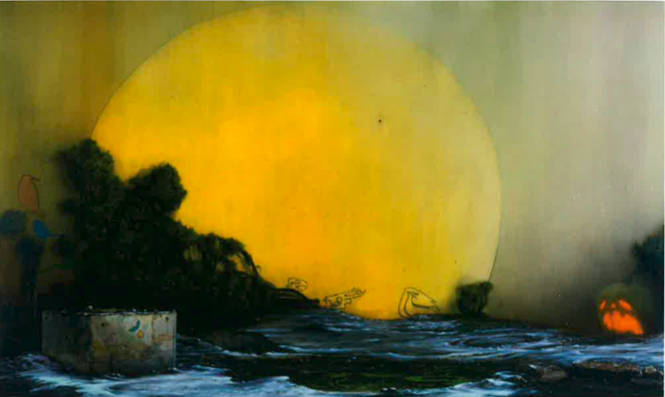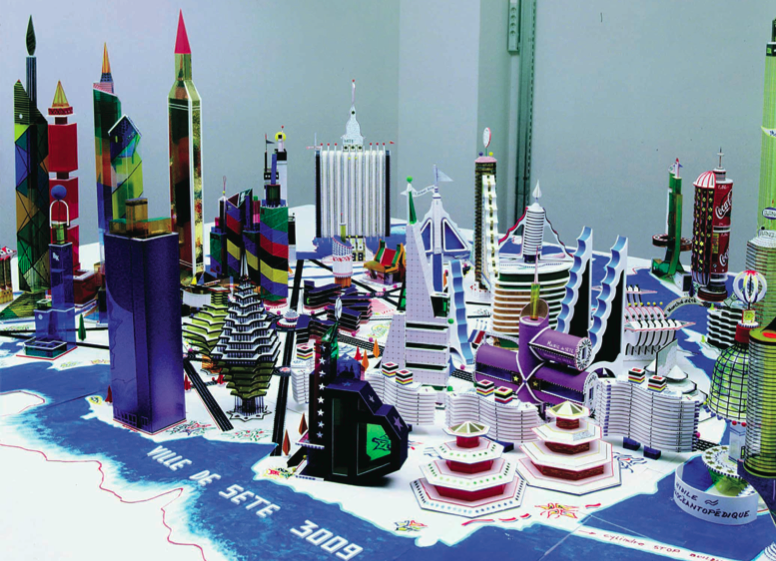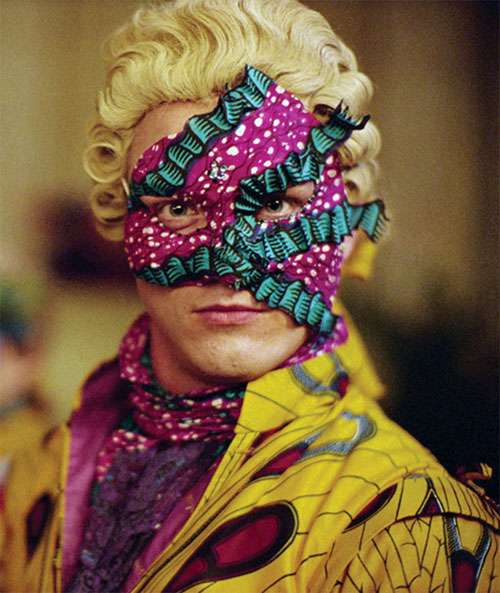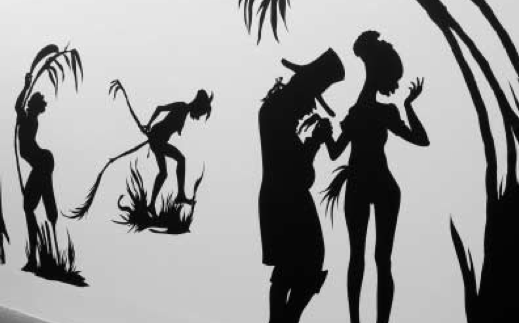Belatedness All Over Again: The African Pavilion at the 52nd Venice Biennial
November 2007
November 2007
May 2007
The aesthetic criteria used to interpret art as a practice have changed radically since the 1960s. To note as much is to observe a truism: the idea (or should that be the ideal) of a universalist aesthetic point of reference, or even the notion of aesthetics as a nominal interpretive baseline, has been discursively displaced by identitarian, theoretical, political, economic, ethical and social interventions. And yet aesthetics as a topic, far from fading into a minor role, has become something of a notional cornerstone in recent discussions about contemporary art.[1] Putting to one side the pre-eminence of performance and installation art in debates about aesthetic form, one of the more prominent statements on the matter has come from Nicolas Bourriaud’s influential volume Relational Aesthetics (2002), a book that has attracted much by way of both criticism and support.[2] Stemming from essays published from 1995 onwards in Documents sur l’art – a journal jointly edited by Bourriaud and Eric Troncy – and in part from the 1996 show ‘Traffic’, curated by Bourriaud for CAPC Bordeaux, Relational Aesthetics was first published in France in 1998 before being published in English in 2002.[3] For a relatively short series of essays the book has attracted a considerable amount of interest; a consequence, no doubt, of Bourriaud’s rather grand claim that he has not only isolated a new aesthetic ‘movement’ in contemporary art (albeit one that is formally diverse and based on loose rather than close associations), but also a critical language within which to discuss this development. (more…)
September 2006
On first viewing, the image appears to be an eccentric map of an uncharted world. The filigree-like coastlines of these unfamiliar islands are realistically defined and clearly delineated, whilst the land mass – albeit in a reversal of traditional maps – is a clear-blue aquamarine. Study the picture further, however, and this inverted map resolves into something other than it first appeared to be. As to what that something else is, there is still some doubt until we read the accompanying title: Container 1 – Rust holes in the top of a shipping container – Tangiers (2003). The blue of these ‘regions’ is in fact the colour of a sky seen from the inside of a rusting shipping container; a corralled sky not so much boundless as claustrophobic. The photograph, now less visually ambiguous, becomes an illustration of confinement and restriction rather than exploration or travel. And it is between these two often reciprocal poles – stasis and movement – that Yto Barrada’s photographs address the state of conditional ennui that pervades Tangiers, a city both the nodal point for the illegal passage of Africans entering Europe and stagnation for those who remain there. (more…)
April 2006

Steve McQueen, Once Upon a Time, 77 of 116, 2002. Supermarket. Photo: Herman Eckermann, NAIC Staff Photographer. Courtesy Marian Goodman Gallery, New York & Paris and Thomas Dane, London.
In 1977, NASA sent 115 images – the so-called ‘Golden Record’ – into space on board the Voyager space probe. They also included greetings in 55 different languages and a number of audio clips, including (amongst others) Beethoven’s 5th Symphony and Blind Willie Johnson’s Dark Was the Night. Projected onto a double-sided, cinema-sized screen, these images – but not the audio clips – are the basis of Steve McQueen’s solo show ‘Once Upon a Time’. The images range from photographs of children being born to family portraits, the monumental (Jupiter) to the miniature (a leaf), and the poetic (a sunset with birds) to the mechanical (a calibration circle). There are ordnance photographs of the Sinai Peninsula and an intimate portrait of a nursing mother. Ethnographic portraits, perhaps inevitably, feature too and, despite the generally auspicious and upbeat tone of the Golden Record, there are also premonitions of more immediate concerns: a picture of rush- hour traffic in India, for example, and a so-called (and curiously empty) ‘modern highway’. Each of these images in ‘Once Upon a Time’ slowly dissolves into the other, giving an effect that is both nostalgic and reminiscent of a time when such images were indeed seen by some as ‘representative’ of life on earth – not to mention a time when images dissolving into one another seemed the height of technology. (more…)
30 March 2006

Morning Is Broken, 2004, oil on canvas, 220 x 370cm ARTIS/Francois Pinault, France
Spring 2006

Bodys Isek Kingelez (Germany/Congo), La ville de Sete en 3009, 2000, paper, cardboard, paint, sequins, glue; covered by polyester in wooden frame, 210 x 300 x 89 cm. Collection Musee International des Arts Modestes, Sete, France.
A social and historical critique which does not consider the conflictual structure of its own discursive operations will only produce the constraints it is seeking to displace. (Weber 111)
‘Africa Remix’, the recent showcase of African art at the Hayward Gallery in London, prompted a number of mixed but largely positive critical responses. In the Observer, Emma Lindsey extolled the ‘ground-breaking and electrifying work’ (26) on show and encouraged everyone to see it. Elsewhere, and in a more mixed response in the Guardian, Jonathan Jones was impressed by the art in the show but equivocal about his own reaction to it. Towards the end of his article, Jones wrote ‘but that’s enough criticism. In the end, this is a subject I probably shouldn’t even be writing about. What do I know? Racism is limitless’ (22). The sense of bemusement in Jones’s article is worth dwelling on here, not least for the fact that its disposition reappears in more ‘critical’ reviews of ‘Africa Remix’.[1] In Art Monthly, Sally O’Reilly’s review of the same show started with the above quote from Jones’s article and went on to engage in its own series of caveats. ‘It was not my idea of fun to review ‘‘Africa Remix’’ either,’ O’Reilly wrote, ‘and the idea would be horrifying, I imagine, to most European art critics especially those from European nations’ (27). For O’Reilly, this ostensible conundrum is made manifest in a number of ‘double binds’ including, but not limited to, the manner in which postcolonial liberalism can often translate into ‘colonialism itself when applied to interpretations of ‘‘the other’’’ (27). In the subsequent issue of Art Monthly, O’Reilly was taken to task on the letters pages for both an ‘unreflexive’ response to the show and the reiteration of a view of African art as somehow culturally (and hence critically) other (Jelinek 14). To Art Monthly’s credit – being one of the few journals in this country, alongside Third Text, to consider the question of art criticism and its purpose to be worthy of any enquiry at all – it allowed this discussion to continue into the following issue where Jones’s take on the show was criticised for being ‘intellectually cowardly’ – a response, in sum, that merely re-codified a number of obstacles to formulating an effective critical response (LaFuente 17).
Fall 2005

Un Ballo in Maschera (A Masked Ball), 2004, color digital video, 32-minute loop. Images courtesy of the artist, James Cohan Gallery, New York, and Stephen Friedman Gallery, London.
Yinka Shonibare first came to widespread attention through his use of Dutch wax fabric, which he has used both as the ground of his paintings and to clothe his sculptures. This bright and distinctive fabric was originally produced in Dutch Indonesia, where no market was found for it, and subsequently copied and produced by the English, who eventually sold it to West Africans, for whom it became a popular everyday item of clothing. It also, crucially, became a sign of identitarian “authenticity” both in Africa and, later, for Africans in England. A colonial invention, Dutch wax fabric offers itself as both a fake and yet “authentic” sign of Africanness, and Shonibare’s use of it in his paintings and sculptures accentuates a politics of (in)authenticity by simultaneously presenting both the ideal of an “authentic” identity and identity as a “fabrication.” Although he has been producing mostly installation-based work of late, Shonibare is also an accomplished painter, and that is where his practice began in the ’80s. It is also easy to overlook, in all the theorizing about postcoloniality and the politics of identity, the amount of amusement and frivolity he can pack into his work.
Summer 2005
March 2005

Kara Walker, Grub For Sharks: A Concession for the Negro Populace, 2004, Courtesy of the Artist and Brent Sikkema, Photograph Tate Liverpool 2004.
In 1840 J M W Turner painted Slavers throwing overboard the Dead and Dying – Typhoon Comingon (The Slave Ship). The subject matter concerned the ‘Zong’, a slave ship that had departed from Liverpool in the 1780s en route to Jamaica where, on arrival, the master of the ship had slaves – both dead and alive – thrown into the shark-infested seas. This nefarious practice was regularly employed by slave traders to claim insurance monies for slaves who had become so enfeebled by the journey they could not be sold on arrival. The issue was one of remuneration: if sick slaves died a ‘natural’ death, the ship’s owners received no compensation; if, however, slaves were thrown overboard in order to expedite the ship’s passage in the face of a possibly ruinous storm, the insurers would pay out. In sum, the loss of a few slaves, when compared with the loss of a ship, was infinitely more palatable to insurance brokers and slave traders alike. (more…)